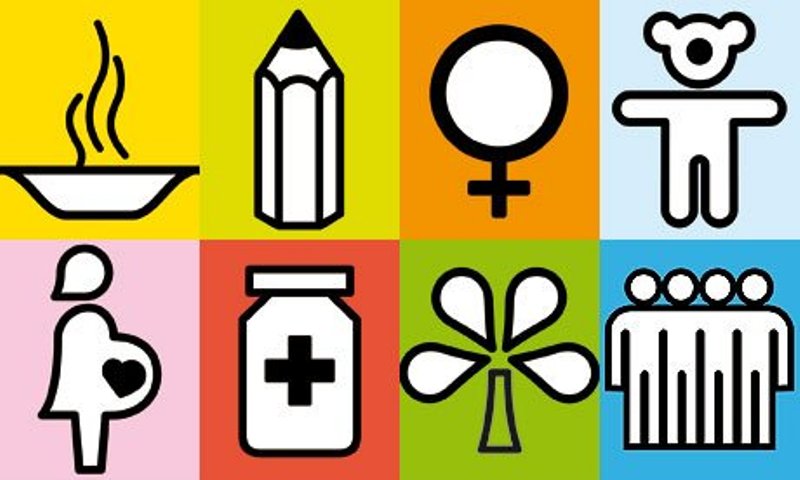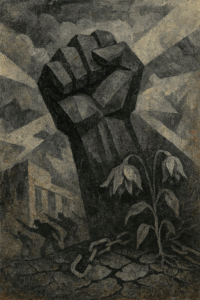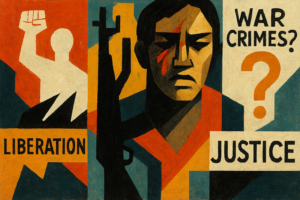
This post has already been read 9 times!
Share the post "Addressing Inequalities in a Post-MDG Agenda: The Location of Minority Women"
Patriarchy and Power Relationship
In most mainstream state discourses of South Asia one of the most understated and unnoticed theme is that of patriarchy. Male hegemony is apparent in any dominant power relations personal, local, national or regional. It works to deprive and marginalize women from centers of power regardless of class, caste or ethnicity. However oppression of vulnerable groups such as religious or ethnic minorities in recent years have specifically victimized minority women in a way that compels one to understand the underlying patriarchal nature and the workings of our nation- states.
The practice of patriarchy has its regional and culture-specific variations. In the words of Cynthia Enloe, “patriarchy does not come in ‘one size fits all’.i Thus in order to locate minority women in patriarchal power structures only some of which are state perpetrated one has to look at mediating processes such as kinship, family structures and community politics.
In the context of present day realities however, it has become imperative to understand that some of the recent trends of violence emerge not out of static social structures, but in the way that these structures themselves get constructed and reconstructed in the battlefield of politics, specifically feminist politics. Here I adopt the following approach: to focus on the structured nature of violence in society to distinguish it from the statist or mainstream discourse of looking at acts of violence as ‘incident’ or ‘issue’. But I do not consider these structures in any deterministic sense of cause and effect but as norms, values and processes underlying gender relations, which may be negotiated variously by victims and perpetrators. In this paper I look more specifically at parameters of gendered violence as experienced by women at the margins of Bangladesh society ( often having comparability with other South Asian regions), for example in the struggle of the indigenous women in the Chittagong Hill Tracts and by Hindu minority women in south-western Bangladesh often called the ‘The Hindu Belt.’
Norms and values underlying and affecting gender relations such as ‘patriarchy’ or ‘tradition’ are constructed and reconstructed as women and men enact them in their individual lives, and through institutions and cultural and social processes. In this sense women and men are not merely passive recipients or ‘victims’ of tradition but actors/agents who choose (consciously and subconsciously), to maintain, reaffirm and strengthen or to resist, challenge and creatively reshape structures of existing gender relations. For example, while men may act to strengthen their positions of power and privilege, women may try to contest and challenge them in various ways.
However, women and men are actors with different access to power, and, often informed by this access, with very different interests in processes of shaping and reshaping gender constructions. Familiar categorical constructions of men as superior and dominant against women as inferior and subordinate, do not only vest power in men over women, they also infuse interests to sustain these divisions. While this may take the form of violence against women, more often than not it operates in subtle ways as an aspect of institutional ideologies, rules and practices. The inheritance laws of Bangladeshi institutions, as they concede male dominance in terms of rights and resources, simultaneously perpetuate and legitimate domestic violence against women by designating male “right” to control property, including women.
But these notions and practices of male dominance may be challenged, negotiated and radically transformed not only from positions of dominance, but from subordinate positions, by women. It is in this latter sense that an analysis of the processes of victimization may also generate understandings of how a woman may negotiate her subject position as victim altogether. From here, one may evaluate the advantages and/or limitations of such responses from the perspective of the women’s movement.
Kinship and Community as Mediators of Patriarchy
From the above section it may be deduced that the state in developing countries provides the locus for most patriarchal practices of power as embodied in its discriminatory laws or political practices. However, the legitimacy of these practices is more often than not mediated through traditional and non-state institutions, customs and processes which structure relationships of kinship, family and community. This has important bearing on gender relationships and hence gendered violence.
Kinship as an integral element of the power relations has been well researched in the context of village studies in the early seventies. What has not been so closely researched however has been the link of kinship to the more elitist power configurations at the core of national politics in. Since most of the political leadership emerges from the expanding middle-class, it is not uncommon to find blood relatives among political personalities belonging to diverse ideological camps. Thus although, on one hand, competition at party level can become very violent and intolerant, the kinship factor provides a buffer zone where extreme views or positions are often negotiated.
This has been a clever entry point used by Islamist parties who wanted to gain credibility in society. For example, in Rajshahi University located in the western part of Bangladesh, members of the fundamentalist Jamat-I-Islami have been encouraged to marry into families in university administration so as to enhance their status within the campus. This is also the reason why even though there be political intransigence at the party level, members of rival parties are quite commonly seen together at social events and may at times purport to have common business interests. It is this feature in politics, which often enables one to bypass or even subvert political positions on the right or left.
The kinship factor also brings into play a particular pattern of gendered politics, which is often rendered invisible at the level of a political system. Since family and kinship ties are important in power configurations, women have become the means through which dominant power configurations may be made manifest. Hence abductions, forced marriages, rape of women belonging to marginalized groups, such as minorities or opposition party cadres are often resorted to in the politics of domination and vendetta. A less violent but nevertheless effective method of conscripting women into the politics of class hegemony is through encouraging ‘political marriages’ where an MP or better still a Minister as a father-in-law can help smooth out processes of obtaining licenses, securing jobs or ordering transfers of lucrative government posts.
It is also this kinship factor, which serves to exclude to a large extent religious and ethnic minorities from the centers of power. Technically speaking, there is nothing to prevent minorities from participating in mainstream politics, thus bringing their own kinship structures into play. However, the foregrounding of a majoritarianism political culture in the form of either a state language or a state religion automatically marginalizes religious and ethnic minorities from attaining a central role in determining class hegemony.ii This is where community politics come into play by articulating its own culture specific notions of the polity and posing it against the dominant notion.
According to feminist research, this is also the juncture where women’s interests get compromised or subsumed under the greater community interest. For example the denial of Hindu men to give Hindu women equal share of inheritance through law reform under the pretext that they will be too weak to defend their property against the land-hungry dominant community or the intransigence of indigenous community leaders to allow their women to marry into the dominant community to forestall dangers of depopulating their race. Given such predicaments as posed by their own community how do minority women articulate their own interests?
In trying to answer these questions I will need to elaborate how minority communities use traditional and culture-specific notions of community as social capital to contain boundaries and defend themselves in an ever-increasing hostile environment on the one hand and in the event of the erosion of such social capital, how they are ultimately driven out of their homes and land. The co-option of women into this internalized notion of community is an important process, which has both positive and negative implications for minority women.
Erosion of social capital and communal disharmony
Social capital refers to features of social organization such as networks, norms and social trust that facilitate coordination and cooperation for mutual benefit. The premise is that when economic and political negotiation is embedded in dense networks of social interaction, incentive for opportunism is reduced iii. Though this concept was originally used to understand business and entrepreneurial initiatives, its use has proliferated to concerns such as community cohesiveness and democracy.
The traditional subsistence economy of most South Asian societies has been sustained by an intricate network of social interactions and relationships, which has been deeply entrenched in the social makeup of peasant societies. This has what has been called bonding or exclusive social capital by Robert Putnam.iv In contrast, bridging or inclusive social capital encompasses people across different social divides.
Kinship, matrimonial alliances and historical conditions, which facilitated inter communal relations or frictions have been underlying forces behind the construction of norms and trust that helped to contain inter-communal violence. It is evident that recent hate-politics apparent in the behavior of the state and partisan politics and the subsequent lack of sufficient effort on part of social institutions to help construct a bridging social capital have led to the erosion of this trust.
Minority Women and Social Capital
The location of minority women within the framework of kinship and community relations or social capital is a problematic one. This is so because norms and trust that form the more bonding kind of social capital are reportedly embedded in community or kinship relations and it is these very same relations, which are often antithetical to women’s interest. One of the more significant examples are to be found in Muslim majority country of Bangladesh in the Hindu men’s defense of Hindu inheritance law in the face of demands for equal legal rights for women. Similarly, in the indigenous resistance movement in the Chittagong Hill Tracts of Bangladesh, Chakma male leadership of the resistance movement demanding autonomy of the region would claim that questions of gender equality should take the back seat to demands for autonomy of the ‘Jumma’ nation.v In the first case social mores and in the second case struggle, both male-defined were considered to be the building blocks of generating and perpetrating trust in the community and defending community boundaries.
However it is also true that state policies and intervention have succeeded in undermining the social trust inherent in these communities and as such have endangered the security of the community in general as well as its women in particular. In recent years, women in minority communities have particularly been targeted during communal attacks, precisely because men of dominant community realize their importance in the inscription of community cohesiveness. They represent in a way domestic capital, as well as the last vestiges of civil society during armed conflict, when they defend hearth and home and carry on day-to-day sustenance of their loved ones against all odds. An attack on women and their bodily integrity is therefore a direct threat to the community, which is considered to be too close to home. It is little wonder therefore to find that the first consideration of minority families is to send their young unmarried daughters away to safer territories.
Thus minority communities have a better chance of survival where traditional bonding social capital have managed to forge intercommunity links, i.e., a bridging social capital rather than in places where such linkages and networks have been contained within one single community.
Location of minority women
Present day realities in South Asia register trends of violence that emerge not only out of static social structures of hierarchy, but also in a way that these structures themselves get constructed and reconstructed in a multi-layered politics of inequality (class, caste, or gender-politics). It is therefore essential to focus on the location of minority women who are subject to manifold layers of inequalities and structural violence resulting in discrimination, deprivation and neglect: (a) from the state as part of having a minority identity, ethnic, caste or religio-cultural; (b) from other communities in the form of violence by non-state actors or from the perpetration of racist ideologies; (c) from the family in case of domestic violence. I look at some of these cases below.
(a) State-instigated Violence
The Beijing Platform foregrounded rape as an instrument of torture in conflict-ridden and post-conflict societies. During conflict situations women are also considered the last vestiges of civil society. When men take up arms, women are usually left to defend the homes and carry on with the day-to-day activities of feeding a family and caring for elders and children often in adverse circumstances. Feminist scholars have also linked this trend as making women more vulnerable to rape by opposition forces. One of the ways to intimidate a whole population is to perpetuate the fear of rape among them and since women are guarding the last vestiges of civil and community life, by making them flee from fear they are also targeting the respective community in question.
Direct violence on women can come about both through the perpetration of violence on women as well as through state approved constitutional provisions that formalizes gendered inequality thereby making women more prone to vulnerability then men. The first can come through conflict situations where security personnel are perpetrators of rape and harassment and the second can come through the laws of the state and its implementation. Both examples can be found in the Chittagong Hill Tracts of Bangladesh where 14 different indigenous communities reside and have led a resistance movement for their rights against the Bangladesh Government and where the Peace Accord reached between the two parties have yet to be realized fully.
It cannot be denied that in a militarized situation, Jumma women constitute the most vulnerable section of the population. Among the many crimes committed against the people of the CHT, sexual violence such as rape, molestation, harassment was especially prevalent. In 1990 information from one refugee camp in India indicated that ‘one in every ten of the total female population had been a victim of rape of Jumma women between 1991 and 1993 in the CHT were by security forces’.vi Of these rape allegations, over 40 per cent of the victims were women under 18. These numbers are however denied by the military authorities.
Aside from these outward manifestations of violence, women were affected in a number of ways during military rule, not least in the daily activities of household chores, procuring food and looking after children, all in an environment that became hostile to their very existence. Such instances of rape and harassment of women by security personnel was the single most important factor behind the formation of a women’s resistance movement in the Hills.
(b) Community-related violence
In the public domain, indigenous women are said to enjoy relatively more freedom than her Bengali sisters, but here too her freedom is more curtailed than her male counterpart. She is given education but depending on the family income. Where income is restricted than the boy gets preference over the girl. Although women put in equal labor to men in the production process, her labor is not as fully recognized as the men. According to some indigenous women, Pahari (Hill) women’s oppression lies in the fact that she has double burden of work. She works in the fields as well as in the home. Sometimes her husband gets drunk and the burden falls on her. However things are changing and during normal times Hill women definitely enjoy more mobility than Bengali women. However, both men and women claimed that women were never teased on the streets or market place until the army came. Sexual harassment of women in public space was something they related directly to the establishment of military rule.
The beginning of this millennium has witnessed minority women being targets of communal violence in South Asia whether it is the post-election violence on the Hindu minority in Bangladesh in 2001 or the communal tension flared against Muslims by the Godhra incident in Gujarat in 2002.vii
The post-election violence in Bangladesh (2001) specifically targeted the Hindu minority population though in a broader frame it also encompassed progressive forces in the rural areas. The violence has largely been known to be initiated by supporters of the Bangladesh Nationalist Party supporters in various localities. The backlash after the elections was systematic and severe. Bangladeshi press has reported that attackers have entered Hindu homes, beaten family members and looted their property and rape and abduction of women too were reported. It was the south-western and southern part of Bangladesh, popularly known as the ‘Hindu belt’ that was most affected. The following narration stems from a visit to the district of Bhola, one of the worst affected areas.
Among the atrocities committed were charging into households, attacking men, women and children with sharp knives and weapons, in certain cases threatening with guns, terrorizing women and children by beating and chasing them and in certain cases raping and attempting rape. Looting of Hindu households and sometimes Muslim households which sheltered Hindus took place throughout the night and in waves since most householders had fled in terror and their houses were left unguarded. No distinction was made between rich and poor households. Houses were left almost bare. As some of the victims said even babies’ clothes were stolen.
Although men were terrorized as well, it was women and children who had to bear the brunt of the attack. Once they saw the attackers the women came out and begged for mercy or to have their husbands spared. The attackers then turned on the women, sometimes asking one woman to fetch another one by name, (‘bring so and so to me’) or else attempting to drag the women at hand. When a twelve year old girl refused to call her mother to the attackers she was raped herself.
But women in Hindu communities in Bangladesh are being affected not only by security issues related to the protection of life and property but also by the erosion of trust that is generally related to class and status issues. These dual factors have resulted in a trend of out-migration to India. Shilpi Rani, 29 was married to an educated young boy of her neighborhood. Shilpi’s marriage was arranged on the condition that her father would pay for his son in laws education. But after six months of their marriage, her husband Parimal, converted to Islam and married a Muslim girl. Shilpi’s parents thinking of their girl’s future took her to India and married her off there.
(c) Personal Laws and Domestic violence
Although violence against women, more specifically domestic violence is an issue that is prevalent among all communities in South Asia, women in minority community are often more susceptible to it then majoritarian communities. The reasons lie in the nature of personal laws inherited from the British colonial times that still dictate many minority communities in India, Pakistan and Bangladesh.
In Bangladesh, beyond the constitutional provisions of equality between women and men, guarantees of equal rights do not extend to family matters, particularly to Hindu marriage impinging on the rights of the women. Personal laws existing in public sphere are related to family, marriage, divorce, custody of children etc. These matters are sanctified by religious law as per religion codes. Every religion does not see the rights of the women, particularly in marriage practices, with equality. In these countries although religious law has been slightly amended over the years with respect to majority community e.g. Hindu personal law in India and Muslim personal law in Pakistan and Bangladesh, parallel amendments have not taken place with respect to minority communities.
India has brought about major changes in its legislatures during 1950s, and has made marriage registration compulsory. Since 1955, India has implemented a uniform marriage registration law, by which women of all religions are protected when they get into a matrimonial relationship. In 1955, new Marriage Act was enacted in India whereby marriage system has totally been changed and polygamy given an end. Divorce system was also introduced. Section 13(1) of Hindu Marriage Act 1955 declares the right of divorce to both the parties on some grounds. Through the enactment of the Hindu Succession Act 1956, sons and daughters were given equal share on the demise of their father or mother while wife or husband was due for one-third share. In 1991, the Indian Succession Act 1925 was amended. The amendment eliminates this discrimination against women and provides that both daughters and sons will receive equal shares in the property of both a female and male intestate. It may however be noted that parallel amendments have not been made for laws relevant to Muslim minorities in India.
As regards Hindu marriage in Bangladesh, the Hindu communities still follow the British laws, and there has not been any development in legislations after 1947 in terms of Hindu marriage laws in Bangladesh. The Hindu Marriage Disabilities Removal Act 1946 allowed Hindu women to live separately from their husband, but this law did not allow them to remarry.
In a current survey on the importance of Hindu Marriage Law in Bangladesh by Research Initiatives, Bangladesh in collaboration with Manusher Jonno Foundation,viii it was seen that women’s demand for reform of Hindu Marriage practices is directly linked to the prevalence of domestic violence in the community. The study reveals most women are susceptible to domestic violence by their husbands or by their in-laws and that majority think that since traditional Hindu laws do not offer them equality in divorce, custody and inheritance nor makes it mandatory to register marriages, they remain disempowered in marital relationships and in the community. Slowly but steadily women are raising their voice for amendments to the law as well as calling for more effective implementation of such laws that exist, e.g. Prevention of Violence against Women, prevention of Domestic Violence Act and the Anti-dowry Act.
Implications for a post-2015 Development Agenda: lessons learnt
The first MDGs perhaps due to their simplicity and practicality had earned a certain universality of appeal. But as a result of the often simple articulation of the goals, they often lost their utility. Addressing inequalities and discriminatory structures would perhaps have lent a little more depth to some of the goals especially those related to poverty and gender. The objective of the paper was to indicate some of the ways in which the third MDG goal of promoting gender equality and women’s empowerment could be deepened.
The first lesson is that such goals cannot be reached by mere distribution of services. One needs to tackle the underlying structural inequalities both theoretically and strategically. The second lesson is that notions of gender inequality are embedded in differential structures of power and wealth and hence vary according to different class, caste, religion and ethnicity. Thus there must be differential and specific ways of dealing with minority women as their problems cannot be glossed over by simply mainstreaming them. The third lesson is that structures of inequalities are by no means static, but change over time. Thus any strategies taken too must be flexible and be responsive to the changes being experienced by the particular group in question. For example the notion of ethnicity itself maybe is changing for communities who show signs of an emerging middle-class resulting in perhaps changing gender relations. Strategizing therefore too should take into consideration such changes. This brings us to the fourth lesson which is that it is important not to essentialize identities such as women, caste or ethnicity. Minority women for example are not a monolithic group and exist with varying intertwining identities for example middle class Hindu women or poor Dalit women. Finally it is important to analyze how the particular community in question, Hindu or Chakma women defines and redefines their own notion of gendered social capital and boundaries, so that inequalities can be discussed in their own terms and not be superimposed on them. In other words if women of a community wishes to change their own lives by addressing inequalities perceived in existing law, the idea should be to offer support to them despite what their male counterparts would say. If however, women do not find themselves prepared enough to take up an issue with their male counterparts then it would not be fair to impose such an issue on them. A post MDG development agenda should be about supporting a structure that offers both choices and opportunities.
Notes
i Enloe Cynthia (1995) The Morning After: Sexual Politics at the End of the Cold War, University of California Press, Berkeley and Los Angeles, 5.
ii Guhathakurta, M. (2002) The Nature of the State in Bangladesh, in Hameeda Hossain (ed) Human Rights in Bangladesh 2001, Dhaka:ASK
iii Putnam, R. (2000) Bowling Alone: The collapse and revival of American community, New York: Simon and Schuster: 288-290 and Smith, M. K. (2001) ‘Social capital’, the encyclopedia of informal education, www.infed.org/biblio/social_capital.htm
iv Putnam, R. (2000) Bowling Alone: The collapse and revival of American community, New York: Simon and Schuster: 22-23
v The Chittagong Hill Tracts occupies a physical area of 5093 square miles in south-eastern Bangladesh, bordering Mizoram and Tripura borders of India and Myanmar. It is inhabited by about 14 ethnic groups among whom the Chakmas Tripuras, and Marmas constitute the majority. According to the 1991 Census, 49 percent are reported to be Bengalis from the plainland.
Over the last quarter of a century, the indigenous people of the CHT has been involved in a struggle for autonomy from the Bangladesh state, the main roots of the conflict being the land issue, the transfer of population from the plainlands to the hills and the control of administration by non-hill people. In 1997, an accord was reached between Government representatives and the armed wing of the resistance , the Shanti Bahini, which brought an end to the armed struggle, but in subsequent years the non-implementation of accord especially those dealing with the devolution of power to hill people , failed to address the root causes of the conflict, thereby perpetrating continued violence in the region.
vi Hill Women’s Federation (HWF) (1995) Leaflet distributed in NGO Forum, Beijing.
vii See Guhathakurta, M. ( 2010) Cartographic Anxieties, Identity Politics and the Imperatives of Bangladesh Policy and Titus, A. ( 2010) Gujarat 2001 – The Politics of Polarization: A Sociological perspective, in Peaceprints: A South Asian Journal of Peacebuilding No.3, vol 2, Winter 2010.
viii Research Initiatives, Bangladesh and Manusher Jonno Foundation ( 2012) Study on the Importance and necessity of Hindu Marriage Law in Bangladesh, unpublished.
Original Document: Addressing Inequalities in a Post-MDG Agenda: The Location of Minority Women. The case of Bangladesh. By Meghna Guhathakurta, Research Initiatives, Bangladesh October 2012. Available at: http://idsn.org/fileadmin/user_folder/pdf/New_files/Bangladesh/Addressing_Inequalities_in_a_Post-MDG_Agenda__The_Location_of_Minority_Women.pdf
Share the post "Addressing Inequalities in a Post-MDG Agenda: The Location of Minority Women"
This post has already been read 9 times!





